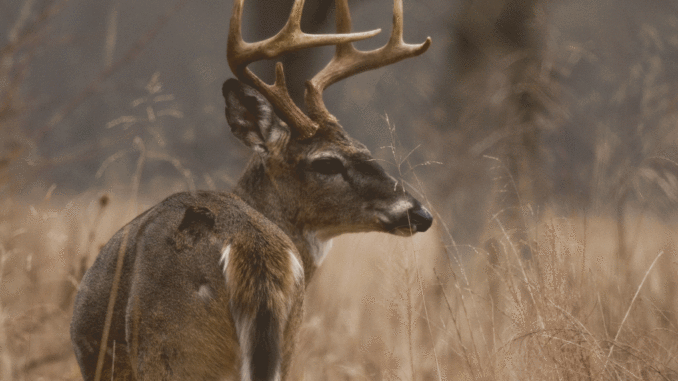
South Carolina hunters won’t find a better time to tangle with a trophy buck than during the transition between summer patterns and the rut. Here’s how…
One of the most-confusing and least-understood segments of the season for many deer hunters is the transition from the pre-rut to the peak of the rut. Between predictable summer patterns and the peak of the rut, deer behavior undergoes major changes. Deer behavior undergoes major changes from the predictable summer patterns to peak-rut patterns, but it doesn’t happen overnight; it occurs over a period of several weeks, and these changes and increased buck activity actually creates some of the best hunting of the season — if hunters make the commitment to stay with the deer movements. Consider the change from a biological standpoint. Charles Ruth, deer-project supervisor for the S.C. Department of Natural Resources said that most hunters across the state will have deer in this transition period late September through approximately Oct. 20.
“Our detailed records show that in the short time period from Oct. 20th until Nov. 10, over half of all the deer conceptions occur, and the peak rut is on,” Ruth said. “But the weeks immediately before that will offer some of the best hunting of the year — but (they) constitute a dramatic change from previous deer activity.
“The reason is simple: the bucks are transitioning from summer patterns and are actually ready for the rut by late-September and early October, but only a small percentage of does are receptive during that time. During this time, there’s a lot of bucks moving, looking for only a few receptive does. This period offers what I consider the best opportunity of the season to see and take bucks. It is the time of year that I personally prefer to hunt, based on years of hunting and having first-hand knowledge of thousands of deer being harvested.”
Ruth is certainly not the only person with that perception. Willie McCutchen, a 63-year-old part-time magistrate in Williamsburg County, has the same opinion. He has hunted deer since he was 8 and has hunted with a rifle, behind dogs and, since the mid-1990s, with a bow. His passion is bow hunting, and that puts him in unique position to stay in fine-tuned connection with deer as the seasons and patterns change.
“I’ll certainly hunt throughout the entire season, every day I can,” McCutchen said. “There are good opportunities for the first few days of the season during August for bow hunting where I live, but the pre-rut, transition time is my favorite and most productive time. There are several reasons for this.
“During the early season, bucks are quite predictable; they are thinking about food primarily,” he said. “Be on a good food source, and you have an opportunity. But they also get smart if you hunt an area repeatedly. There’s quite a lull for several weeks when we don’t see as many bucks. Typically, late in September to around the first of October, it’s like switching a light switch; suddenly, the deer start moving. When they do, I have to change from the stands I have been hunting that are food-source based to other areas where bucks are looking for does.
“The bucks … will do a lot of moving but will not stray very far from their home base, and that keeps them in my area. Scraping and rubbing signs will be prevalent and are keys to finding buck movements and whereabouts. That’s why I prefer this time of the year. Once the full-rut kicks in, bucks will often move long distances and (they) actually become harder to predict, especially for a bowhunter. Every year, I will have trail-camera photos of deer that were in my area that I hear about being killed a half-mile or further away during the rut.”
The use of trail cameras seems to be a common thread with a lot of hunters in term of keeping up with deer during this transition. McCutchen relies on them heavily, as does Mike Johnson, general manger at The Clinton House in Laurens County, a deer-hunting mecca in the state’s Piedmont area.
Johnson (864-833-0274) said that deer movements change dramatically, and he uses trail cameras to stay on top of these movements.
“Deer season starts later in our part of the state than in the Lowcountry, but I still have to stay on top of deer movements for bow hunting and muzzleloading seasons,” he said. “The best way I’ve found is to use trail cameras, along with sitting in stands just observing deer movements and not hunting. My guides and I will also do this to stay on top of deer movements as they change. As bucks break out of their summer patterns and often move in groups, they begin to be more individualistic, and I can keep up with their movements in this manner. The use of trail cameras enables me to keep clients in stands where deer are moving. As patterns change, I can make adjustments as necessary.”
McCutchen said in addition to using a lot of trial cameras, he’ll also hunt a lot of different stands. He said he’ll have many lock-on stands pre-hung and ready to hunt long before the season.
“One key I’ve found is to get the stands up early and just leave them alone until the deer get into pre-rut and start moving,” McCutchen said. “I start hunting areas away from the stands where deer come to feed. Sometimes I’m only moving 20 to 30 yards away, but the bucks will often come to look for does but not actually come to a food source. I believe the bucks will feed, but their priority is to search for and find does, so they’ll feed at night.
“We have a lot of doe deer in our area, so these bucks keep moving, looking for a receptive doe. I spend as much time as I can in the stands, and I change stand locations repeatedly to stay on top of the movements. I’ll refine my hunting as necessary to get within bow range. The same is true whether you hunt with a rifle or bow. You will need to adapt and move to the new travel routes or you’ll not see as many bucks, especially quality bucks, if you continue to hunt stands that are strictly food-based.”
McCutchen said that scouting for sign such as scrapes and rubs is a good indicator as well. He can get an idea where bucks are moving, and those are prime areas to hunt.
McCutchen said that rifle hunters can also take advantage of the pre-rut movements often by hunting large agriculture fields. He said the soybean and cut corn fields are very attractive to does, and thus the bucks will ease into the edges of the fields to check them out.
“With a rifle, you can cove a lot more territory, and sometimes the large agriculture fields and even very large food plots will work,” he said. “But at this time of the season, bucks may step into the fields from about anyplace. That’s fine for rifle hunting, but for my bow hunting, I have to be very precise, so I do my hunting in the woods,” he said.
Johnson concurs and goes to great lengths to have food plots ready for October and November.
“We’ll have deer use the food plots heavily, and we have a big variety of types of foods so something is always available for them to eat,” he said. “However, when the acorns begin to fall, usually in October, the feeding will be all about acorns. That’s a key factor, because even though bucks may be thinking about breeding, many of the does are not ready and they will be foraging on acorns. That’s where you can expect bucks to show up.
“We’ve learned that bucks will often take the most-difficult path to these areas, in terms of being seen by hunters. Bucks will work along the thickets between pine and hardwood plantations, for example. They also often use ditches. If the wind is wrong for the direction they want to travel, they will literally slip down into a ditch to stay out of sight. If the wind is right, they stay close to the edge of the ditch in thicker cover, but alongside of it so they can better use the wind to their advantage. Either way, a hunter has to be constantly watching for a buck slipping through an area. If they are odds are good they’ll see bucks checking on does in open food plots. The bucks may not fully come out fully into the open, but they’ll be there looking along the edge.”
Johnson said experienced hunters can use climbing stands to enhance their odds of success when deer are moving so much.
“A climber provides mobility to take the hunt to the deer,” he said. “When an area where a lot of does are feeding and staying is located, it’s a prime place to slip in with a climbing stand. When the deer are mobile, hunters need to do the same.”

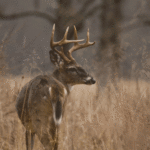
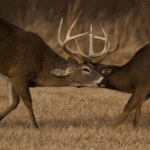
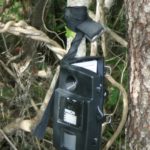
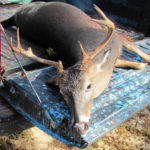



Be the first to comment